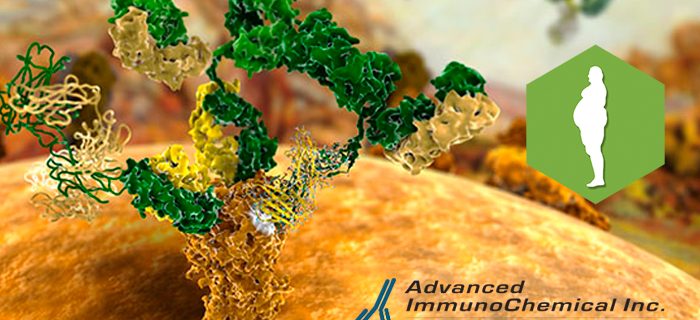Advanced ImmunoChemical offers monoclonal antibody pairs to different oligomeric forms of human adiponectin. In addition, for calibration and assay development, we offer native purified human adiponectin for reliable, adiponectin-specific assays that do not cross-react with the closest structural homolog, human C1q.
Click here to view Adiponectin Product Performance Information:
 In blood, adiponectin is found as trimers (LMW), hexamers (MMW) and high order multimers (HMW) (2).
In blood, adiponectin is found as trimers (LMW), hexamers (MMW) and high order multimers (HMW) (2).
Click below to see our Adiponectin and Related Products:
#1-ADP Monoclonal Mouse Anti-human Adiponectin
#2-HH10 Monoclonal Mouse Anti-Hemoglobin human HbA10
#2-RBP4 Monoclonal Mouse Anti-human Retinol-binding Protein 4 (RBP4)
#1-L1 Monoclonal Mouse Anti-human Leptin
#8-ADP Adiponectin, human, native
#8-RBP4-f Retinol-binding protein 4 (RBP4) from human plasma, free form
#8-RBP4-c RBP4 from human plasma, complexed with prealbumin
The primary mechanisms by which adiponectin enhances insulin sensitivity appears to be through increased fatty acid oxidation and inhibition of hepatic glucose production. Adiponectin levels are reduced by pro-inflammatory cytokines, especially tumor necrosis factor-alpha. Adiponectin, in addition to possible anti-inflammatory and anti-atherogenic effects, appears to be an insulin enhancer, with a potential as a new pharmacologic treatment modality of metabolic syndrome and type 2 diabetes (1).
The concentration of total adiponectin in the blood is approximately 3-30 μg/ml, whereas the concentration of the closest structural homolog of adiponectin, C1q, is approximately 80-200 μg/ml. Therefore, it is critical that anti-adiponectin antibodies do not cross-react with human C1q (3).
References:
(1) Lihn, A. S., Pedersen, S. B., & Richelsen, B. (2005, February). Adiponectin: Actin, regulation and association to insulin sensitivity. Obesity Reviews, 6(1), 13-21. doi:10.1111/j.1467-789X.2005.00159.x
(2) Wang, y., et al. Hydroxylation and Glycosylation of the Four Conserved Lysine Residues in the Collagenous Domain of Adiponectin. J.B.C., 2002, 277:19521-19529.
(3) Wouters, D., Voskuyl, A. E., Molenaar, E. T., Dijkmans, B. A., & Hack, C. E. (2006, April). Evaluation of classical complement pathway activation in rheumatoid arthritis: Measurement of C1q-C4 complexes as novel activation products. Arthritis and Rheumatism, 54(4), 1143-1150. doi:10.1002/art.21729
Postscript: Kindly visit us at AdvImmuno.com to see our other clinical areas of interest.

